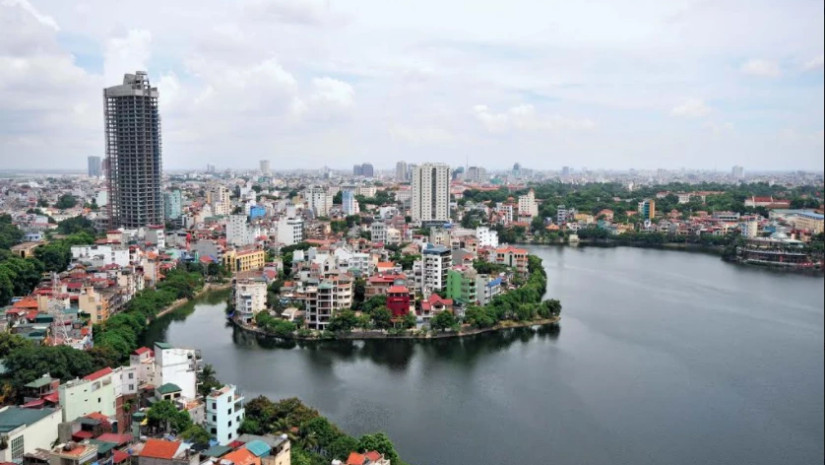Either in relation to Covid-19 or economic performance, success is the most frequently used word applied to Vietnam during 2020. A country of 97 million population, which shares its land border with China, recorded only 35 deaths from the novel coronavirus. Due to rising manufacturing and exports, Vietnam's GDP expanded by 2.62% (YoY) in the third quarter of the year, making it the only country in Asia besides China set for economic growth in 2020. Albeit, experts say, it may be too late for most other countries to learn from Vietnam’s success, we still looked into details what Vietnam made right.
Handling Outbreak
Experts believe, that Vietnam’s success comes from a wealth of experience in dealing with infectious diseases, investment in public health infrastructure and a commitment to early action — Vietnam was the first country recognized by the World Health Organization (WHO) to contain severe acute respiratory syndrome or SARs in 2003. Not long after, the country successfully combated the H5N1 bird flu. Many of the strategies used to suppress these diseases are again in use during the Covid-19 epidemic, together with the new ones.
In January, when Wuhan announced the first death, Vietnam tightened its border and airport control of Chinese visitors. When the first Covid cases were announced in Vietnam, a father and son from China, it took precautionary measures above and beyond WHO recommendations, including health declaration and temperature screening at every border entry point and stopping flights to and from Wuhan. Preparations for a pandemic were implemented more than a month before WHO declared Covid-19 a pandemic. By late March, the country had suspended all international flights. Since then, only Vietnamese nationals and some foreign experts and businessmen have been allowed in with strict conditions, including mandatory testing and a 14-day quarantine.
The government also decided to embrace freedom of information on Covid-related matters. The travel and activity history of confirmed patients is publicly available on government websites, news articles and social media posts. Such epidemiological traces also enable bystanders to check if they themselves are at risk and alert others around them, reducing potential spread.
All quarantine-related costs are covered by the government, in order to prevent people from using cost as an excuse to avoid isolation.
The testing of suspected cases is mandatory. This approach may have been a key in reducing community transmissions. By April, data from health ministries compiled by Reuters showed that Vietnam had the highest test ratio per confirmed case in the world.
Transformation of one of the world’s Poorest Nations into a Lower Middle-Income Country
According to the World Bank data, Vietnam’s development over the last 30 years has been remarkable. Between 2002 and 2018, GDP per capita increased by 2.7 times, reaching over US$2,700 in 2019, and more than 45 million people were lifted out of poverty.
In 2019, Vietnam’s economy continued to show fundamental strength and resilience, supported by robust domestic demand and export-oriented manufacturing. Real GDP grew by an estimated 7 percent in 2019, similar to 2018, one of the fastest growth rates in the region.
Given its deep integration with the global economy, the Vietnamese economy has been hit hard by the ongoing COVID-19 pandemic, but has shown remarkable resilience. The initial health impact of the outbreak had not been as severe in Vietnam as in other countries due to proactive measures at the national and subnational levels. The macro-economic and fiscal framework remains resilient with an estimated GDP growth rate of 1.8 percent in the first half of 2020, projected to reach 2.8 percent for the year. Vietnam is one of the few countries in the world not to expect a recession, though its growth rate for this year is far less than the typical 6-7 percent pre-crisis projections.
Thanks to its strong fundamentals, and assuming the relative control of the COVID-19 pandemic both in Vietnam and the world, the Vietnamese economy should rebound in 2021.
Its population reached 96.5 million in 2019 (up from about 60 million in 1986) and is expected to expand to 120 million by 2050. Today, 70 percent of the population is under 35 years of age.
Pursuant to the data of the Ministry of Planning and Investment of Vietnam, as of June 20, 2020, the total value of newly registered capital, adjusted capital and capital contribution or share purchase by foreign investors reached US$ 15.67 billion, equaling 84.9% as compared to the same period in 2019. Capital generated by FDI projects was estimated at US$ 8.65 billion, equaling 95.1% as compared to the same period in 2019.
Vietnam received praise from all over the world for how it has handled the outbreak. With the economy restarting, Hanoi hopes to use this newly gained trust to attract more foreign investors and businesses.
Vietnam hopes to continue the trend that started a few years ago. After trade tensions between the US and China began to rise, some companies moved their production from China to Vietnam. With comparatively cheap labor, a young population and a relatively open investment climate, the Southeast Asian country is often seen as a good alternative for mass production in China.
















